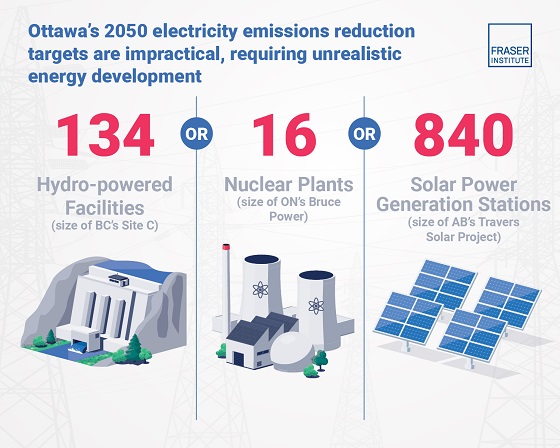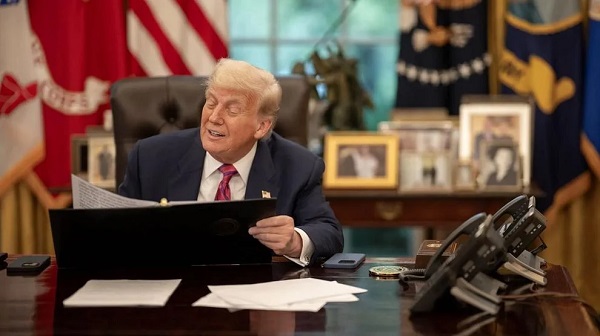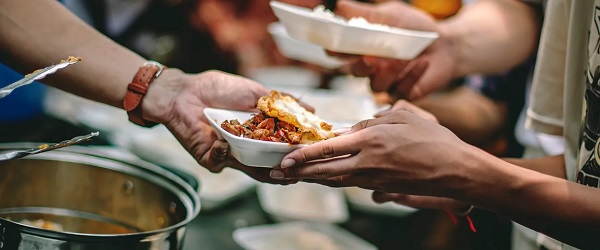Energy
Canada must build 840 solar-power stations or 16 nuclear power plants to meet Ottawa’s 2050 emission-reduction target

From the Fraser Institute
The federal government’s plan to eliminate greenhouse gas (GHG) emissions from electricity generation by 2050 is impossible in practical terms, finds a new study published today by the Fraser Institute, an independent, non-partisan Canadian public policy think-tank.
Due to population growth, economic growth and the transition to electrified transportation, electricity demand in Canada will increase substantially in coming years. “To meet existing and future electricity demand with low-emitting or zero-emitting sources within the government’s timeline, Canada would need to rapidly build infrastructure on a scale never before seen in the country’s history,” said Kenneth P.
Green, senior fellow at the Fraser Institute and author of Rapid Decarbonization of Electricity and Future Supply Constraints.
For example, to generate the electricity needed through 2050 solely with solar power, we’d need to build 840 solar-power generation stations the size of Alberta’s Travers Solar Project. At a construction time of two years per project, this would take 1,680 construction years to accomplish.
If we relied solely on wind power, Canada would need to build 574 wind-power installations the size of Quebec’s Seigneurie de Beaupre wind-power station. At a construction time of two years per project, this would take 1,150 construction years to accomplish.
If we relied solely on hydropower, we’d need to build 134 hydro-power facilities the size of the Site C power station in British Columbia. At a construction time of seven years per project, this would take 938 construction years to accomplish.
If we relied solely on nuclear power, we’d need to construct 16 new nuclear plants the size of Ontario’s Bruce Nuclear Generating Station. At a construction time of seven years per project, this would take 112 construction years to accomplish.
Currently, the process of planning and constructing electricity-generation facilities in Canada is often marked by delays and significant cost overruns. For B.C.’s Site C project, it took approximately 43 years from the initial planning studies in 1971 to environmental certification in 2014, with project completion expected in 2025 at a cost of $16 billion.
“When Canadians assess the viability of the federal government’s emission-reduction timelines, they should understand the practical reality of electricity generation in Canada,” Green said.
Decarbonizing Canada’s Electricity Generation: Rapid Decarbonization of Electricity and Future Supply Constraints
- Canada’s Clean Electricity Regulations (Canada, 2024a) require all provinces to fully “decarbonize” their electricity generation as part of the federal government’s broader “Net-Zero 2050” greenhouse gas emissions mitigation plan.
- Canada’s electricity demands are expected to grow in line with the country’s population, economic growth, and the transition to electrified transportation. Projections from the Canada Energy Regulator, Canadian Climate Institute, and Department of Finance estimate the need for an additional 684 TWh of generation capacity by 2050.
- If Canada were to meet this demand solely with wind power, it would require the construction of approximately 575 wind-power installations, each the size of Quebec’s Seigneurie de Beaupré Wind Farm, over 25 years. However, with a construction timeline of two years per project, this would equate to 1,150 construction years. Meeting future Canadian electricity demand using only wind power would also require over one million hectares of land—an area nearly 14.5 times the size of the municipality of Calgary.
- If Canada were to rely entirely on hydropower, it would need to construct 134 facilities similar in size to the Site C power station in British Columbia. Meeting all future demand with hydropower would occupy approximately 54,988 hectares of land—roughly 1.5 times the area of the municipality of Montreal.
- If Canada were to meet its future demand exclusively with nuclear power, it would need to construct 16 additional nuclear plants, each equivalent to Ontario’s Bruce Nuclear Generating Station.
- Meeting the predicted future electricity demand with these low/no CO2 sources will be a daunting challenge and is likely impossible within the 2050 timeframe.
Energy
75 per cent of Canadians support the construction of new pipelines to the East Coast and British Columbia

-
71 per cent of Canadians find the approval process too long.
-
67 per cent of Quebecers support the Marinvest Energy natural gas project.
“While there has always been a clear majority of Canadians supporting the development of new pipelines, it seems that the trade dispute has helped firm up this support,” says Gabriel Giguère, senior policy analyst at the MEI. “From coast to coast, Canadians appreciate the importance of the energy industry to our prosperity.”
Three-quarters of Canadians support constructing new pipelines to ports in Eastern Canada or British Columbia in order to diversify our export markets for oil and gas.
This proportion is 14 percentage points higher than it was last year, with the “strongly agree” category accounting for almost all of the increase.
For its part, Marinvest Energy’s natural gas pipeline and liquefaction plant project, in Quebec’s North Shore region, is supported by 67 per cent of Quebecers polled, who see it as a way to reduce European dependence on Russian natural gas.
Moreover, 54 per cent of Quebecers now say they support the development of the province’s own oil resources. This represents a six-point increase over last year.
“This year again, we see that this preconceived notion according to which Quebecers oppose energy development is false,” says Mr. Giguère. “Quebecers’ increased support for pipeline projects should signal to politicians that there is social acceptability, whatever certain lobby groups might think.”
It is also the case that seven in ten Canadians (71 per cent) think the approval process for major projects, including environmental assessments, is too long and should be reformed. In Quebec, 63 per cent are of this opinion.
The federal Bill C-5 and Quebec Bill 5 seem to respond to these concerns by trying to accelerate the approval of certain large projects selected by governments.
In July, the MEI recommended a revision of the assessment process in order to make it swift by default instead of creating a way to bypass it as Bill C-5 and Bill 5 do.
“Canadians understand that the burdensome assessment process undermines our prosperity and the creation of good, well-paid jobs,” says Mr. Giguère. “While the recent bills to accelerate projects of national interest are a step in the right direction, it would be better simply to reform the assessment process so that it works, rather than creating a workaround.”
A sample of 1,159 Canadians aged 18 and older were surveyed between November 27 and December 2, 2025. The results are accurate to within ± 3.5 percentage points, 19 times out of 20.
Business
Geopolitics no longer drives oil prices the way it used to

This article supplied by Troy Media.
Oil markets are shrugging off war and sanctions, a sign that oversupply now matters more than disruption
Oil producers hoping geopolitics would lift prices are running into a harsh reality. Markets are brushing off wars and sanctions as traders focus instead on expectations of a deep and persistent oil glut.
That shift was evident last week. Despite several geopolitical developments that would once have pushed prices higher, including the U.S. seizure of a Venezuelan crude tanker and fresh Ukrainian strikes on Russian energy infrastructure, oil markets barely reacted, with prices ending the week lower.
Brent crude settled Friday at US$61.12 a barrel and U.S. West Texas Intermediate at US$57.44, capping a weekly drop of more than four per cent.
Instead of responding to disruption headlines, markets were reacting to a different risk. Bearish sentiment, rather than geopolitics, continued to dominate as expectations of a “2026 glut” took centre stage.
At the heart of that outlook is a growing supply overhang. The oil market is grappling with whether sanctioned Russian and Iranian cargoes should still be counted as supply. That uncertainty helps explain why prices have been slow to react to a glut that is already forming on the water, said Carol Ryan, writing for The Wall Street Journal.
The scale of that buildup is significant. There are 1.4 billion barrels of oil “on the water,” 24 per cent higher than the average for this time of year between 2016 and 2024, according to oil analytics firm Vortexa. These figures capture shipments still in transit or cargoes that have yet to find a buyer, a clear sign that supply is running ahead of immediate demand.
Official forecasts have reinforced that view. Last week, the International Energy Agency trimmed its projected 2026 surplus to 3.84 million barrels per day, down from 4.09 million barrels per day projected previously. Even so, the IEA still sees a large oversupply relative to global demand.
Demand growth offers little relief. The IEA expects growth of 830 kb/d (thousand barrels per day) in 2025 and 860 kb/d in 2026, with petrochemical feedstocks accounting for a larger share of incremental demand. That pace remains modest against the volume of supply coming to market.
OPEC, however, has offered a different assessment. In its latest report, the group pointed to a near balance, forecasting demand for OPEC+ crude averaging about 43 million barrels per day in 2026, roughly in line with what it produced in November.
Reflecting that confidence. OPEC+ kept policy steady late in November, pausing planned output hikes for the first quarter of 2026 while more than three million barrels per day of cuts remain in place. Those measures are supportive in theory, but markets have shown little sign of being persuaded.
Recent geopolitical events underline that scepticism. The ongoing Russia-Ukraine war and Ukrainian strikes on Russian energy infrastructure, including reported hits on facilities such as the Slavneft-YANOS refinery in Yaroslavl, again failed to lift prices. Russia-Ukraine headlines pulled prices down more than strikes lifted them, according to media reports, suggesting traders were more attuned to “peace deal” risk than to supply disruption.
Washington’s move against Venezuelan crude shipments offered another test. The U.S. seizure of a Venezuelan tanker, the first formal seizure under the 2019 sanctions framework, had a muted price impact, writes Marcin Frackiewicz of Oilprice.com.
Venezuela’s exports fell sharply in the days that followed, but markets remained largely unmoved. One explanation is that Venezuela’s output is no longer large enough to tighten global balances the way it once did, and that abundant global supply has reduced the geopolitical premium.
Taken together, the signal is hard to miss. Oil producers, including in Canada, face a reality check in a market that no longer rewards headlines, only discipline and demand.
Toronto-based Rashid Husain Syed is a highly regarded analyst specializing in energy and politics, particularly in the Middle East. In addition to his contributions to local and international newspapers, Rashid frequently lends his expertise as a speaker at global conferences. Organizations such as the Department of Energy in Washington and the International Energy Agency in Paris have sought his insights on global energy matters.
Troy Media empowers Canadian community news outlets by providing independent, insightful analysis and commentary. Our mission is to support local media in helping Canadians stay informed and engaged by delivering reliable content that strengthens community connections and deepens understanding across the country.
-

 Automotive16 hours ago
Automotive16 hours agoPoliticians should be honest about environmental pros and cons of electric vehicles
-

 Daily Caller2 days ago
Daily Caller2 days ago‘Almost Sounds Made Up’: Jeffrey Epstein Was Bill Clinton Plus-One At Moroccan King’s Wedding, Per Report
-

 Crime2 days ago
Crime2 days agoBrown University shooter dead of apparent self-inflicted gunshot wound
-

 Business2 days ago
Business2 days agoTrump signs order reclassifying marijuana as Schedule III drug
-

 Bruce Dowbiggin1 day ago
Bruce Dowbiggin1 day agoHunting Poilievre Covers For Upcoming Demographic Collapse After Boomers
-

 Alberta1 day ago
Alberta1 day agoAlberta’s new diagnostic policy appears to meet standard for Canada Health Act compliance
-

 COVID-191 day ago
COVID-191 day agoFreedom Convoy protester appeals after judge dismissed challenge to frozen bank accounts
-

 Alberta2 days ago
Alberta2 days agoHousing in Calgary and Edmonton remains expensive but more affordable than other cities








